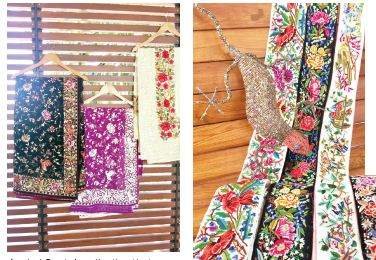Churning Out Mamaians For 95 Years, And Still Going Strong
People build institutions and then it is the other way around. The Mama Parsi Girls’ School, which turned 95 on Monday, has earned a reputation for building several thousand lives.
The classrooms of the 18th century sandstone building has nurtured the likes of Ferishtay Aslam, the head of corporate affairs Unilever; Nabeela, the hairstylist; and Sameera Raja, the sole proprietor of the Canvas Gallery.
In its corridors, students of all social classes have walked hand in hand dressed in the same uniforms – right down to their hairbands and socks.That was one “eccentricity” that Mrs Shigri, who has served the school for 33 years, noted on her first day there.
“The girls looked exactly the same. Even their hairbands were the same colour: black, plain plastic.”Over the years she saw the school grow. “An O-level section opened. Last year, we became affiliated with the Aga Khan University Examination Board.”
The school works in two shifts – morning and afternoon – and educates about 2,127 girls.It is not that the journey has been easy. A teacher recalls how politicians pressured the school to admit their children. “A famous politician belonging to the city’s largest party once forced former principal Zarin T Mavalvala to give admission to his daughters. When she refused, the school began receiving excessive electricity bills, but Mavalvala did not succumb to the pressure,” she said.
A former teacher of the school claims that there were times when the Board of Secondary Education Karachi refused to give Mamaians positions despite them scoring the highest marks.
“They [the BSEK officials] used to demand a certain amount of money. But Mavalvala refused. She said, ‘I don’t want the position; I want my girls to be good human beings’,” the teacher disclosed requesting anonymity. That was one of the reasons Mama Parsi shifted to the AKU-EB.
Mavalvala, an old Parsi lady in a skirt, refuses to comment. She smiles: “The time to comment has gone, and the time to act has begun. We need good teachers; we have enough schools.”
Jashan and Milad
To celebrate its 95th anniversary, a Jashan prayer was organised for Parsi girls and a Milad for Muslim girls.
The doorways of the school were decorated with garlands of yellow carnations, patterns of white chalk filled with red, yellow and blue powder designed on the floor.
“It brings good luck. In every Parsi home you will find it, unless there has been a death,” explained Dolly Trompaymala, who takes care of the school decoration.
Inside the prayer room, a row of 20 Parsi girls sat on a bench wearing prayer caps. Next to them was a larger group – teachers with heads covered with scarves. Two priests sitting on a white mantle lighted a fire and offered prayers.
The rest of the girls – more than 2,000 – left for the ground where the Milad was organised. They took off their socks, placed them in plastic bags they were asked to bring, and sat on a white chaddar. Girls sitting on a stage in colourful dupattas began the Milad.
They spoke eloquent Urdu, and delivered poetic verses praising the Holy Prophet (PBUH). Five girls stood up, and sprayed rose water on the audience.
Nine-year-old Haya watched all the proceedings from a distance. Unlike the other students who sat on the floor, she was in a chair. Her legs turned inwards at an awkward angle. Haya is disabled, but that does not put a full stop to her mental growth.
“I want to be a science teacher when I grow up, and teach at the Mama Parsi,” she hopes.
Non-teaching staff
Schools would not be the same if it were not for the janitors, peons and maids.Sixty-year-old Nasreen has swept the mosaic floors of the huge school building since she was a young girl. Ex-Mamaians recall how the corridors echoed with the tinkle of her anklets back then.
Now an older woman dressed in a saree, she smiles, joy shining through her eyes. But she is too shy to comment.Nasreen lives in the backyard of the building, where many other employees reside.
History
On April 1, 1918, the Parsi community established a school for their girls. They had a boys’ school – the BVS Parsi School – founded in 1870. As there was not a separate school for girls, the founding fathers of the Mama Parsi School decided to open one.
Initially, the classes for girls started at the BVS Parsi School, but after a year, the girls’ school shifted to the Mama Mansion opposite Zainab Market.The building is now known as the Haq Building. On April 1, 1925, the 70 girls-strong school was shifted to its present building on the MA Jinnah Road.
In 1947, the Quaid-e-Azam requested the school management to also admit Muslims. From that time onwards, the school has been educating girls of all faiths without any bias or prejudice.
Published sidrahroghay.com





